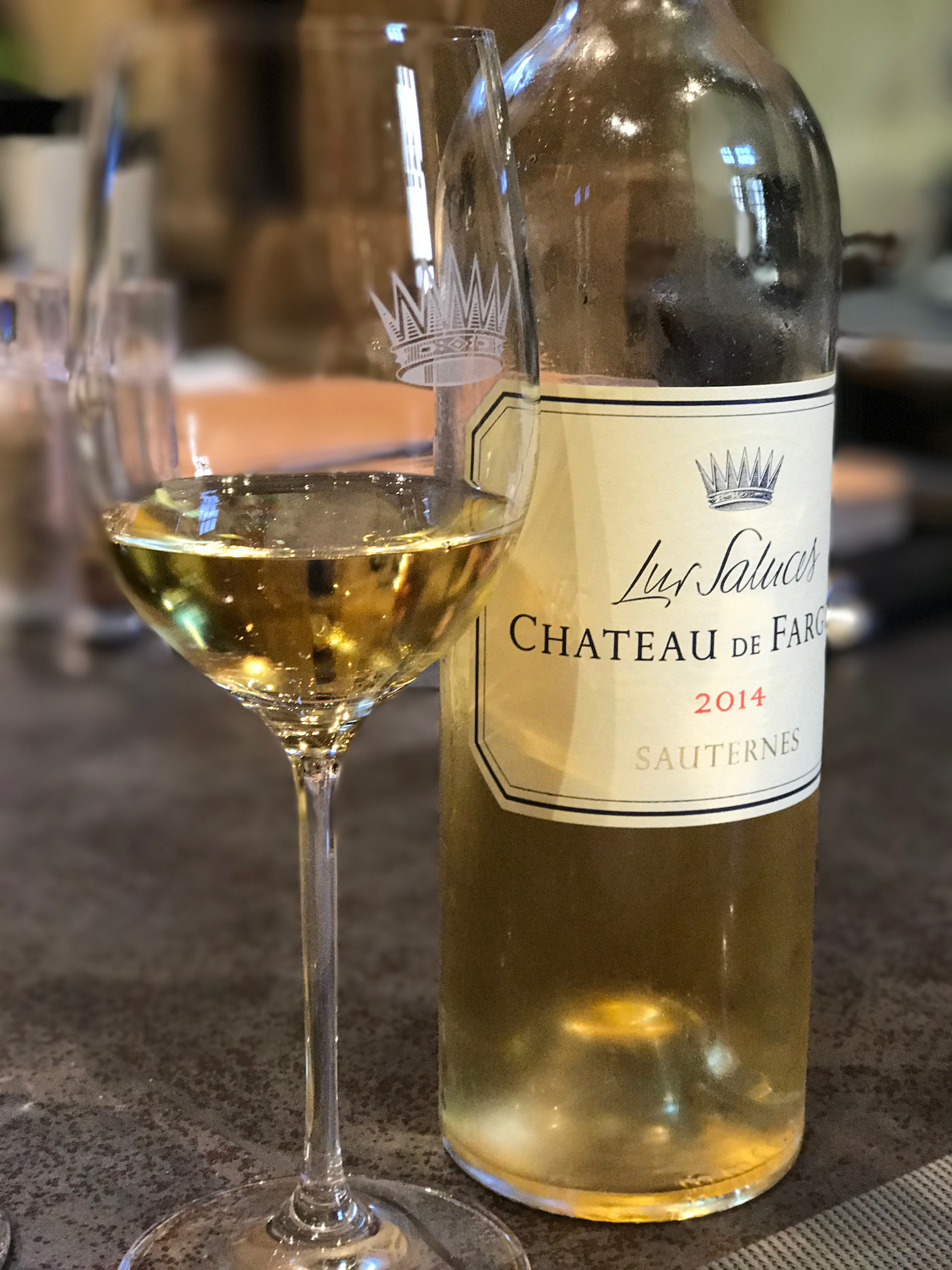
Lur Saluces Chateau de Fargues is one of the premier producers in Sauterne.
Sauternes and the sweet wines of Bordeaux are a classic wine style. And they still fit in well with today's foods and lifestyles, but how much do you know about them? Here are 11 interesting facts about these fabulous wines.
1. Just 3% of all Bordeaux vineyard acres are devoted to sweet wines. Due to low yields, only 2% of the wine volume is sweet.
2. Sauternes is the most famous sweet wine region in Bordeaux. It's top-rated properties include Chateau d'Yquem, Chateau Guidraud, Chateau Suduiraut and Chateau Climens.
There are nine other AOCs though. Among the most notable are:
- Barsac AOC (within Sauternes and able to use that designation too. Barsac wines are distinctively high in acid, due the area’s unique, ferrous soil.
- Loupiac AOC lies between Cadillac and Sainte Croix du Monts. Its laws require greater ripeness than those of Sauterne, which leads slightly sweeter wines.
- Cadillac AOC is across the river from Sauternes in Entre Deux Mers. It’s hilliest of the sweet Bordeaux AOCs.
Sainte Croix du Monts AOC, which looks across the river to Sauternes, is hilly with chalk and limestone soil made made substantially from decomposing oyster shells.
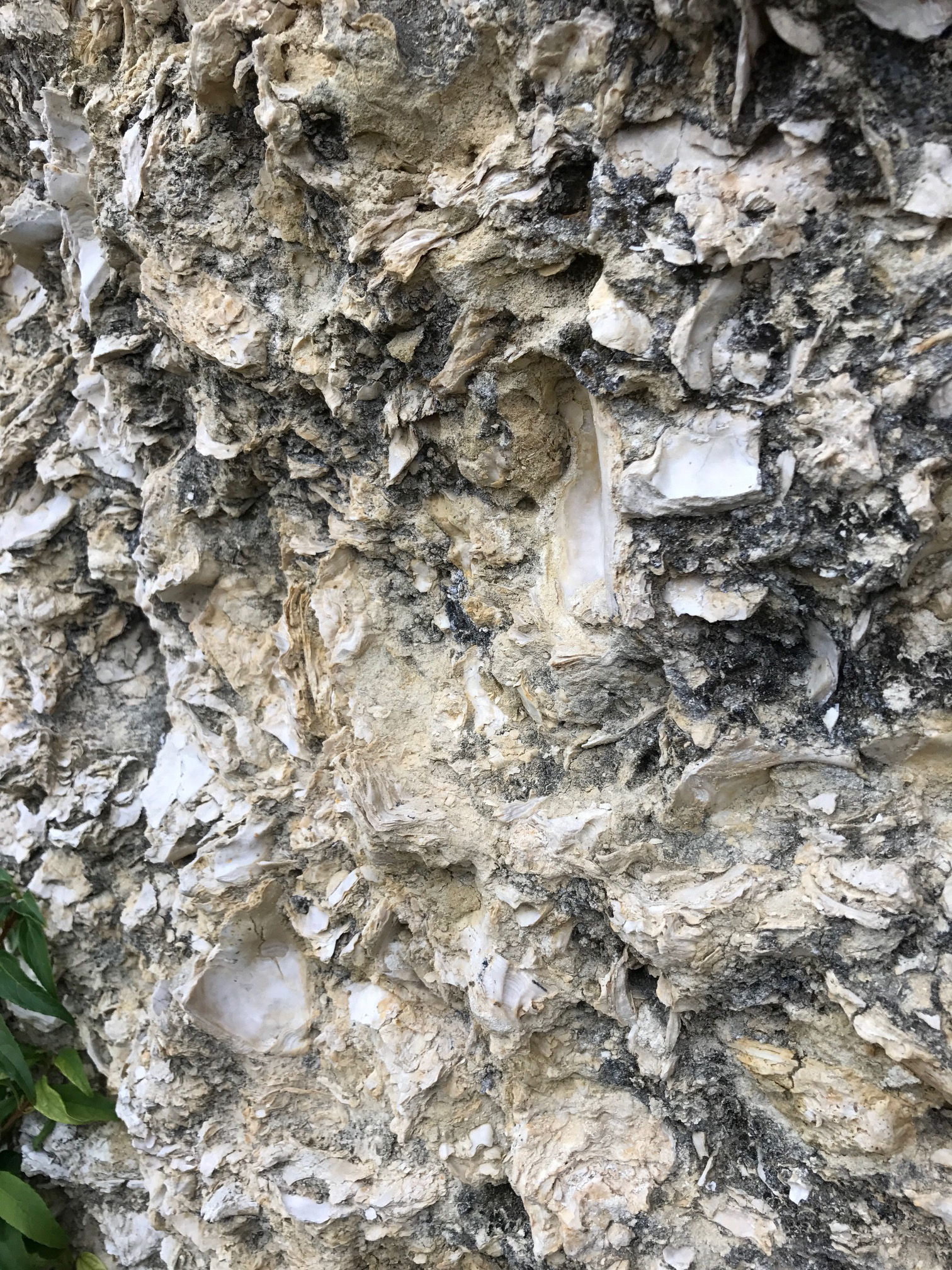
The sedimentary soil of Sainte Croix du Monts consists substantially of fossilized oyster shells
3. The sweet wines of Bordeaux tend to be blends, consisting primarily of Semillon. That grape is particularly susceptible to botrytis, which helps create the unique, concentrated character of these wines.
4. The second most-used grape is Sauvignon Blanc, but rarely does it account for more than 20% in the blend.
5. The third most-common grape is Muscadelle (not related to Muscat). It’s almost never more than 5% in a blend. Many producers don’t use it at all. In some areas, small amounts of Sauvignon Gris are also used.
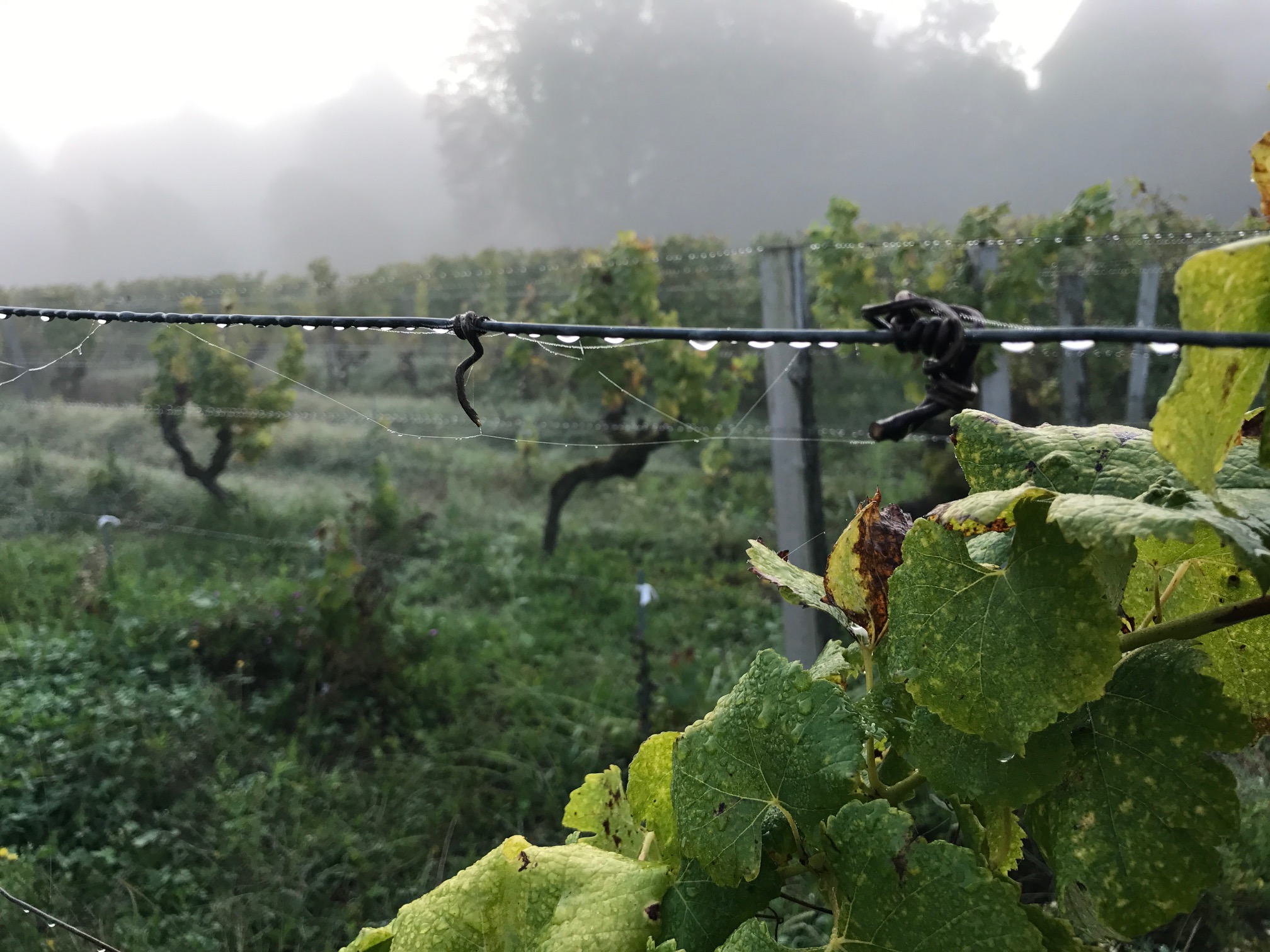
A typically cool, foggy, October morning in Sauternes during harvest
6. Botrytis, “noble rot,” is what makes these Bordeaux wines so flavorful and sweet. Botrytis grows on the grape bunches late in the season, fostered by cool, morning fog and warm, dry afternoons. The botrytis feeds on the grapes’ water and, to a much lesser extent, acidity and sugar. Between the water consumed by botrytis and that which evaporates from the now porous grape skins, the concentration of flavor, sugar and acid in each grape increases dramatically.
The location of a vineyard strongly determines the prevalence and quality of botrytis' effect on the grapes. Vineyards near the cold Ciron River are foggier. In vineyards with high elevations, such as Chateau d'Yquem, the fog clears earlier in the day. That helps prevent the wrong kind of rot from developing and improves quality.
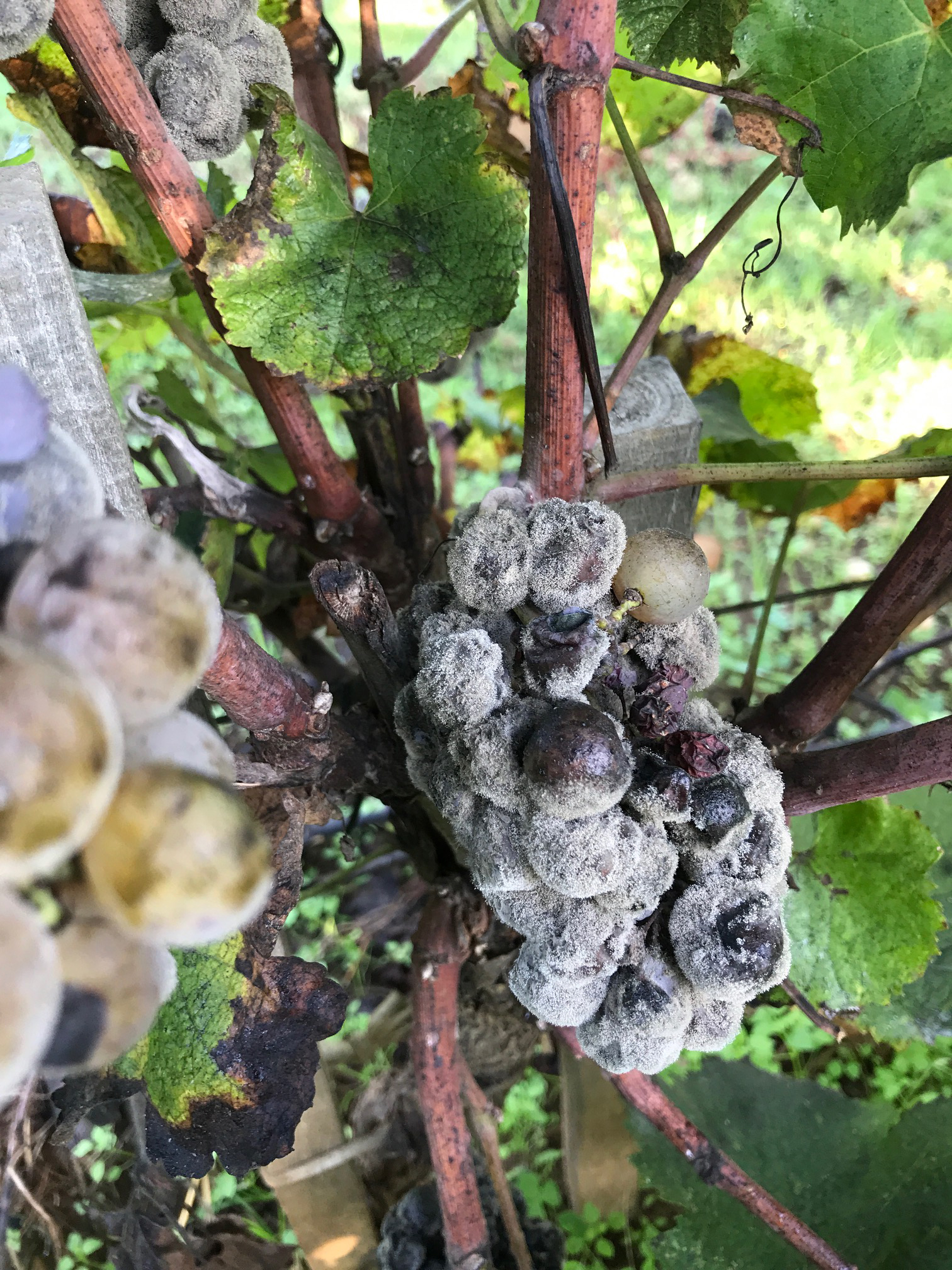
Individual grapes are covered and dehydrated by the pale, botrytis rot. But the rot doesn't affect all grapes equally.
7. Harvesting botrytized grapes for sweet wines is slow, methodical work and great care must be taken. Unlike most other wines, all sorting is done while harvesting—only healthy grapes with the right amount of botrytis and ripeness go into the pickers’ baskets. Often, only a small portion of any particular grape bunch is harvested on a given day. The rest remains on the vine to develop further. Harvest for these wines can take place over 30 days or more and require as many as seven phases through the vineyard.
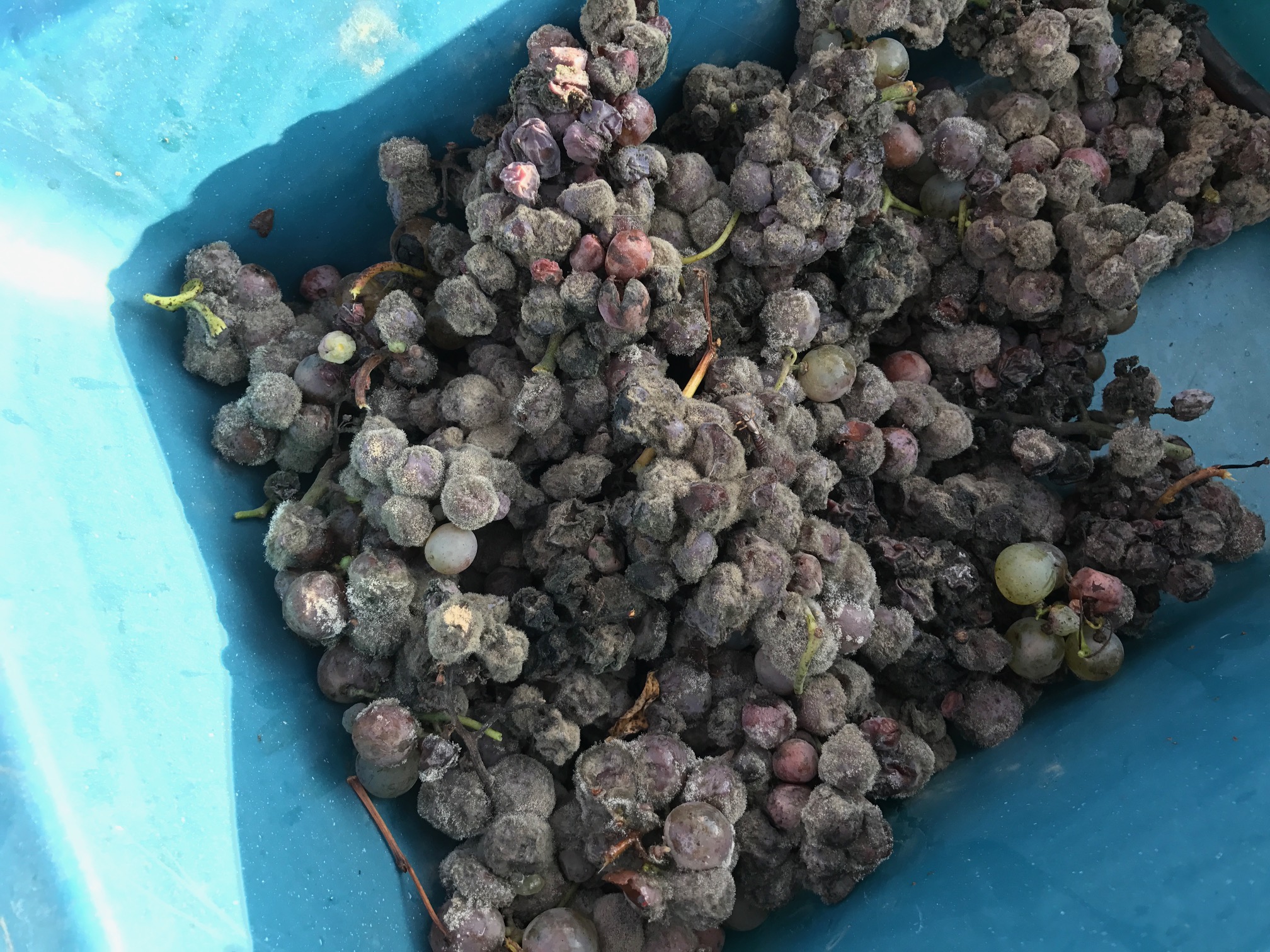
Botrytized Semillon grapes I picked recently in Bordeaux
8. Harvested grapes are pressed immediately and the juice soon begins to ferment, typically with native yeast. While the intensely sweet juice would result in alcohol of 22% or higher if it fermented dry, the yeast dies naturally once alcohol reaches 13-14%. That means sugar remains in the wine, at least 60 grams/liter of sugar and, more typically, 80 to 180 grams. (A typical cola has about 71 grams.)
9. Many sweet Bordeaux age very well and open bottles will hold in your refrigerator longer than a dry white wine—up to 3 weeks. This is due to the acidity and sugar, both of which are preservatives, and the fact that the juice oxidizes somewhat in the grapes on the vine and therefore won’t readily oxidize more after vinification. The best wines, such as Chateau d'Yquem, from great years can continue to improve for more than fifty years.
10. We tend to think of the sweet wines of Bordeaux as dessert wines and as a “classic” pairing for foie gras. However, many of these wines are only lightly sweet and even the richer bottles are well-balanced by acidity. They are good as aperitifs or paired with savory courses throughout a meal. Duck, roast chicken, game birds, pork and white fishes can all work. So can raw oysters! And, for dessert, skip the sweets and enjoy the wine on its own or with cheese.
11. You don’t have to drink the sweet wines of Bordeaux as is. They work in cocktails—savory, tart or fruity. For example, the drier wines are very refreshing on ice with tonic water and the sweetest, intensely fruited wines are perfect in Tiki drinks.
JJ Buckley has a very extensive selection of sweet Bordeaux wines from Sauternes and its neighboring regions. Included multiple vintages from the icons of that region, including:
Chateau d'Yquem
Chateau de Fargues
Guiraud
Chateau Suduiraut
Chateau Raymond-Lafon
Rieussec
JJ Buckley guest blogger Fred Swan is a San Francisco-based wine writer, educator, and authority on California wines and wineries. His writing has appeared in The Tasting Panel and SOMM Journal. Online, he writes for his own site, FredSwan.Wine (formerly NorCalWine), PlanetGrape, and GuildSomm. He teaches at the San Francisco Wine School. Fred’s certifications include WSET Diploma, Certified Sommelier, California Wine Appellation Specialist, Certified Specialist of Wine, French Wine Scholar, Italian Wine Professional, Napa Valley Wine Educator and Level 3 WSET Educator. In 2009, he was awarded a fellowship by the Symposium for Professional Wine Writers. In that same year, he was inducted into the Eschansonnerie des Papes, the honorary society of the Chateauneuf-du-Pape AOC.
All photos by Fred Swan.